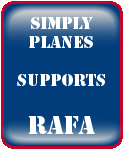No. 45(R) Squadron
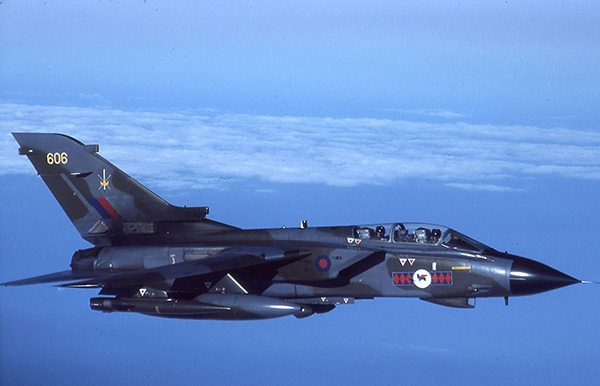
Tornado GR1 ZA606 45(R) Sqn TWCU, 19th October 1989. Image courtesy of Robert Shaw
WWI
No 45 Squadron formed at Gosport on 1st March 1916, equipped with the normal wide variety of training types. In May the squadron moved to Sedgeford, via Thetford, to complete its work up. In September it was issued with its operational equipment, the Sopwith 1½ Strutter, prior to embarking for France in October.
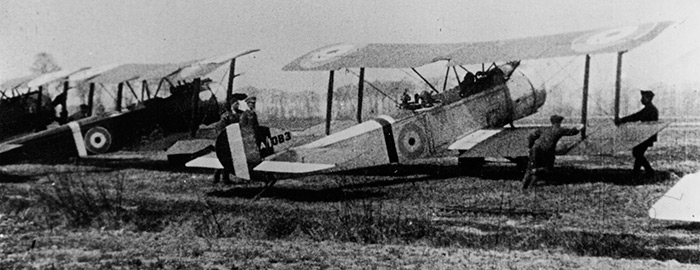
Sopwith 11/2 Strutters. Crown Copyright
In December the squadron settled at Ste-Marie-Cappel where it was to remain for almost a year. In July 1917 the squadron began to convert to the single seat Sopwith Camel. On 15th November the squadron was withdrawn from operations so that it could move to Italy. After a train journey delayed by logistics issues and weather, the squadron eventually arrived at its operational airfield, Istrana, on Christmas Day. It was to spend the next 8 months in Italy, with a move to Grossa after three. During this time they claimed 154 aerial victories with 114 confirmed kills. On 12th September the squadron set off for Bettoncourt, France which was to be its base for the remainder of hostilities. At the end of October the squadron began to convert to the Sopwith Snipe and a new role of bomber escort. However the Armistice came into effect when only 2 Snipes had been delivered. After the Armistice flying became very intermittent and in early in the new year the squadron gave up its aircraft. After spending 1919 as a cadre based at Rendcomb, insurance against a resumption of hostilities, the squadron was formally disbanded on 31 December. The war ended with the squadron having claimed 316 victories for the loss of 80 aircrew, 72 of them in action.
Unlike many wartime squadrons, there were soon plans for No 45 and this disbandment was to be short. The new phase in the squadron’s life meant a major change in location and role. In April 1921 it reformed at Helwan, Egypt as part of the colonial policing force; the start of more than 20 years in the Middle East. It was also to be the start of almost 50 years of continuous operations overseas. The initial equipment was the DH9A but these were replaced by the Vickers Vimy when the squadron moved to Almaza in July. In the following February these in turn were replaced by the Vickers Vernon.
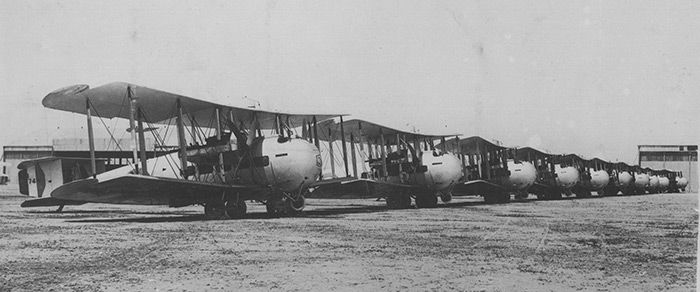
Vickers Vernons. Crown Copyright
The Vernon was a transport development of the Vimy with a bulbous fuselage mated to the original flying surfaces and engines. Having received the Vernons the squadron moved to Iraq. Early in 1927 the squadron returned to Egypt, initially to Heliopolis but in October to Helwan which would be its main base until 1939. In April 1927 the Vernons were replaced by the DH9A. In August 1929 the squadron received the Fairey IIIF, a much more modern aircraft although still a development of a Great War type.
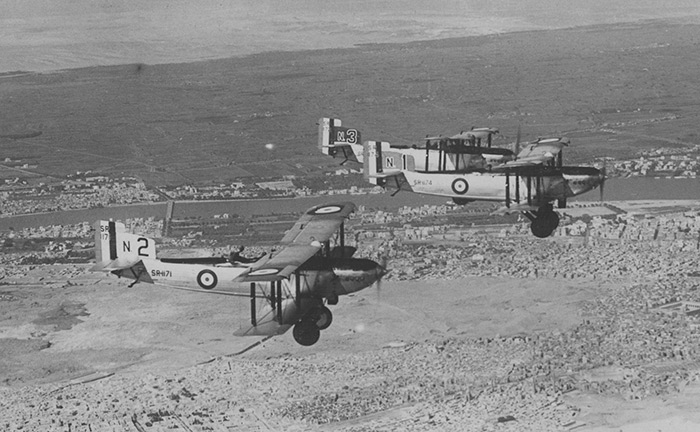
Fairey IIIFs over East Africa 1938. Crown Copyright
An expansion of the RAF’s presence in the Middle East, prompted by the Abyssinian Crisis, coincided with a planned re-equipment programme and, along with several other squadrons, No 45 gained a fourth flight. As a temporary expedient, some Harts were received in September 1935 but they were only operated until early 1936. The Eastleigh detachment only received the Fairey Gordon which it operated throughout 1936 when it became the basis of a reformed 223 Sqn. The main part of the squadron converted from the Fairey IIIF to the Vickers Vincent in December 1935 and again to the Vickers Wellesley in December 1937.
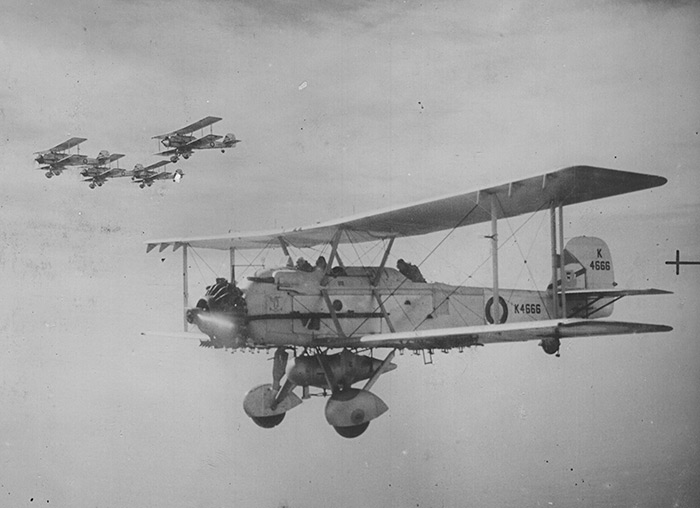
Vickers Vincent K4666. Crown Copyright
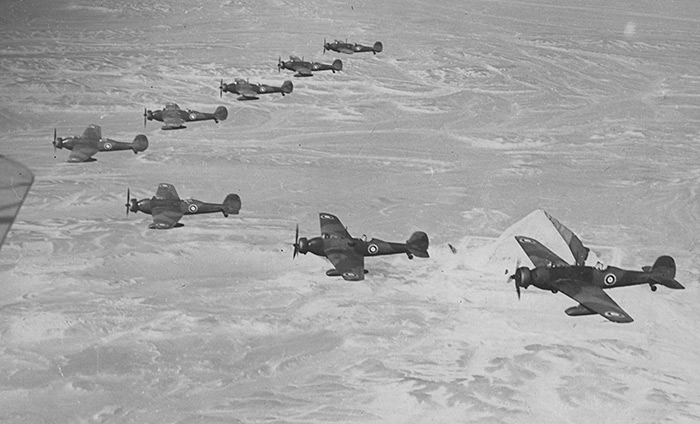
Vickers Wellesleys 1938. Crown Copyright
In January 1939 the squadron moved to Ismailia and in June received the Blenheim I. The squadron remained in the Middle East throughout the first two and a half years of the war but following the start of the war with Japan it moved east. Still operating the Blenheim, now the Mk IV, they arrived in Burma Moving to Dum Dum, India at the end of April 1942 they spent the rest of the war at numerous locations in India. In December 1942 they exchanged the Blenheim for the Vengance IA and II. A further change of equipment came in February 1944 in the form of the Mosquito VI. They retained the Mosquito for the rest of the war and into the post-war period and by May 1946 they had arrived at Negombo, Ceylon.
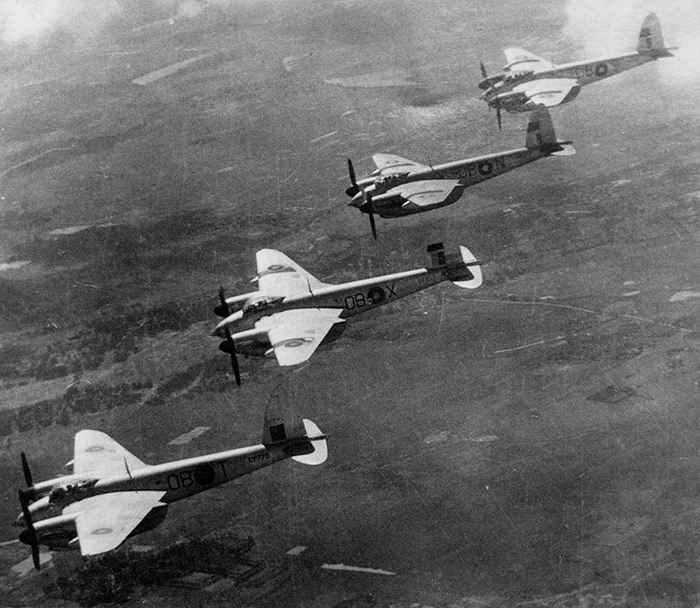
Mosquito BVI formation. Crown Copyright
The glued wooden structure of the Mosquito was far from ideal for extended operation in tropical theatres and plans were in hand to re-equip the maritime strike squadrons, including 45 Sqn, with the Bristol Brigand. However the protracted development of the Brigand led to a requirement for interim re-equipment with the Beaufighter TFX; this occurred in January 1947. In November 1947 the squadron was re-designated as a light bomber units.
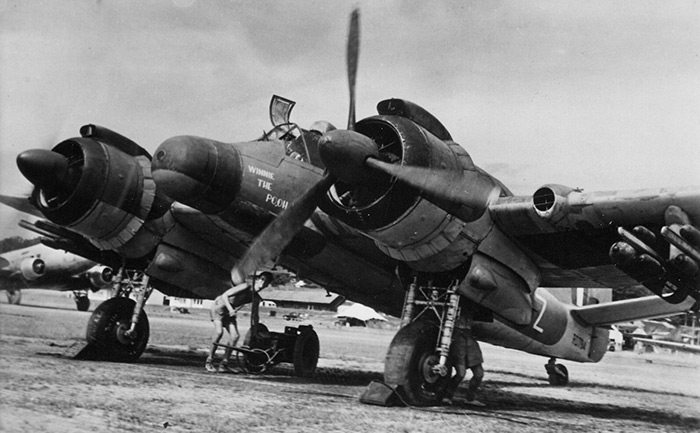
Beaufighter TFX OB.Z probably RD754. Crown Copyright
In July 1948 an emergency was declared in Malaya, as a result of a communist insurgency and in August a large portion of the squadron was detached to Kuala Lumpur to participate in Operation FIREDOG. After operating from the two widely separated locations for 9 months the remainder of the squadron left Negombo in May 1949. In October the Brigand B1s finally began to arrive and in December the squadron was relocated to Tengah.
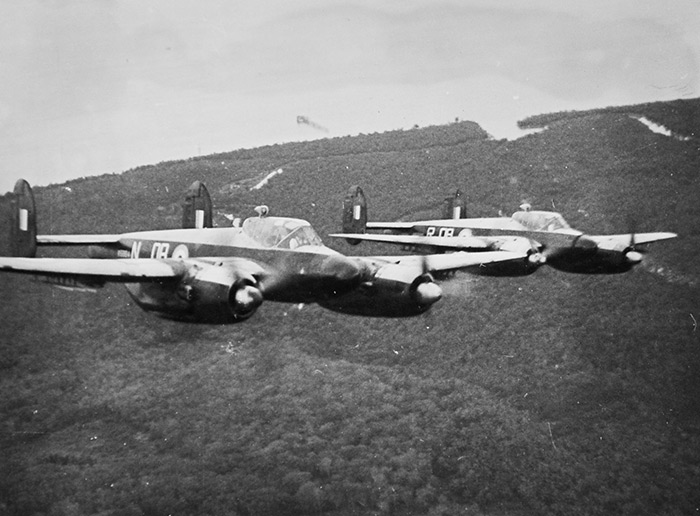
Bristol Brigand B1. Crown Copyright
The squadron was to spend the next 20 years at Tengah except for 21/2 years between 1955 and 1957 spent at Butterworth. During this time the squadron operated in turn the Brigand B1, Hornet F3, Vampire FB9, Venom FB1, Canberra B2 and Canberra B15.
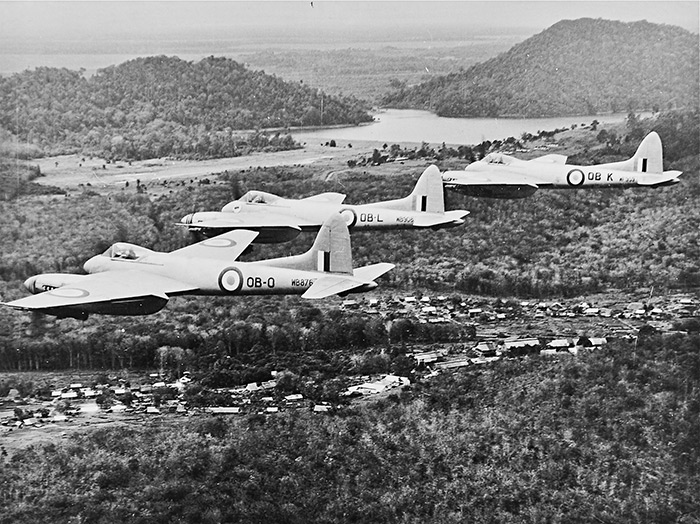
Hornet F3s. Crown Copyright
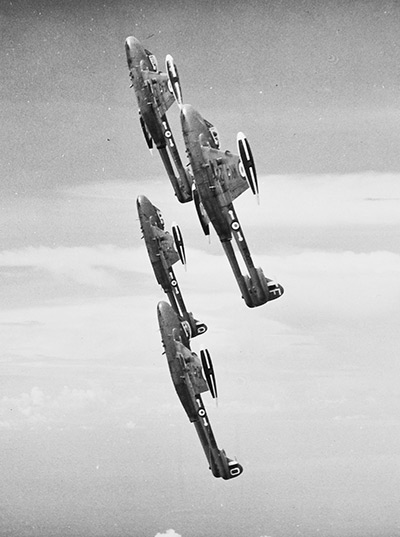
Vampire FB9s. Crown Copyright
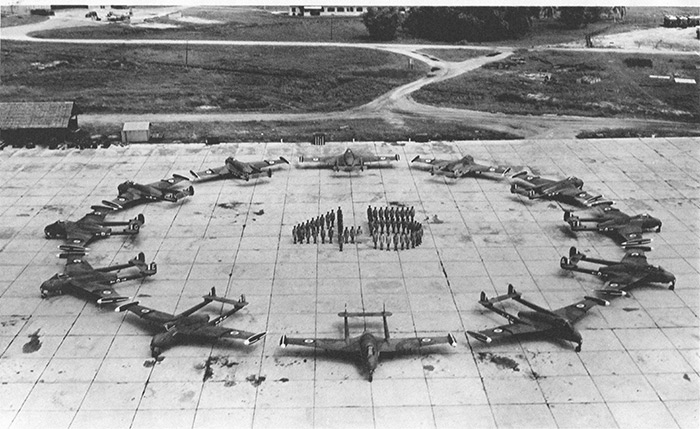
Venom FB1s Penang 1956-7. Crown Copyright
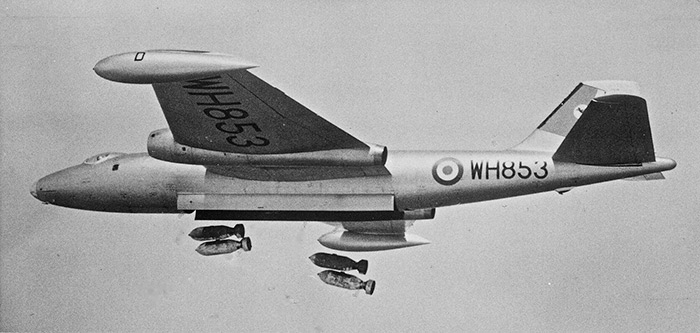
Canberra B2 WH853. Crown Copyright
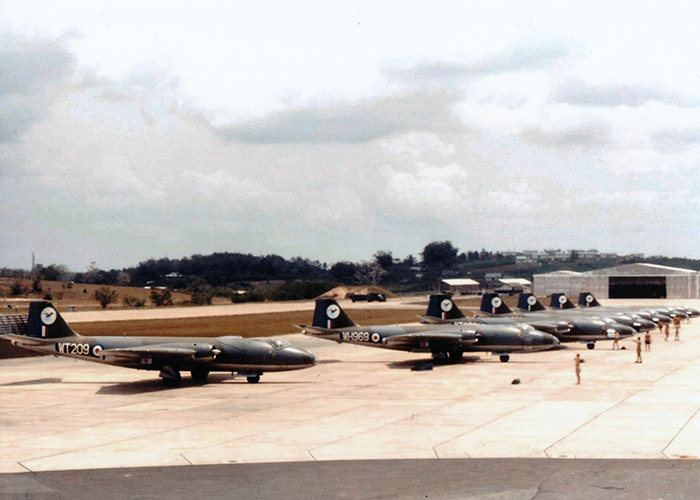
Canberra B15s 45 Sqn possibly at Tengah. Image via Robert Fielding
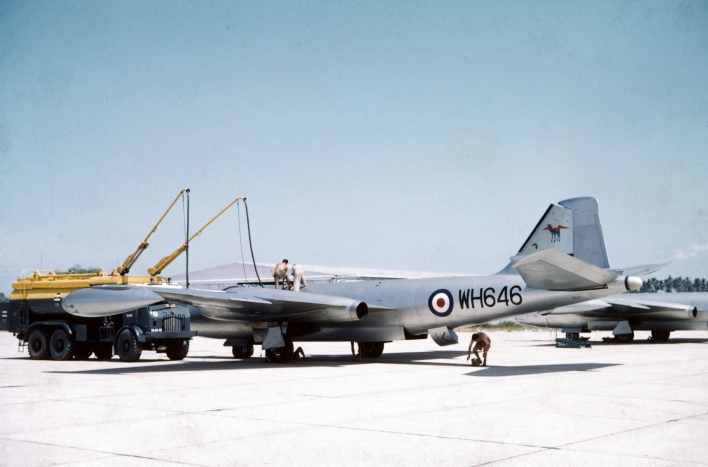
Canberra B2 WH646. Image via Adrian M Balch.
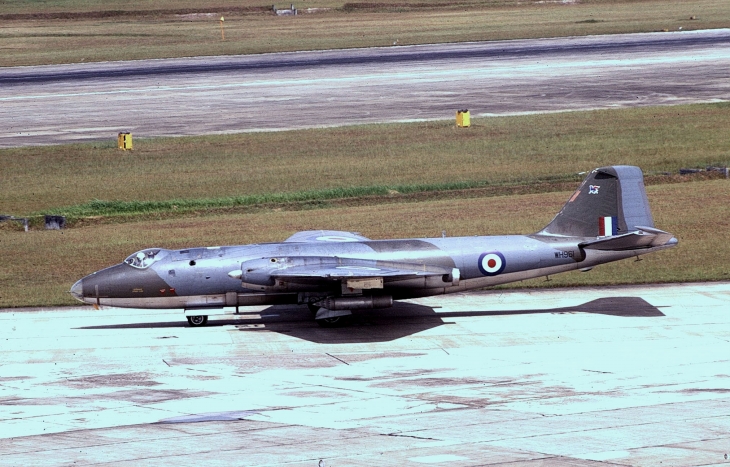
Canberra B15 WH961. Image via Richard O Andrews.
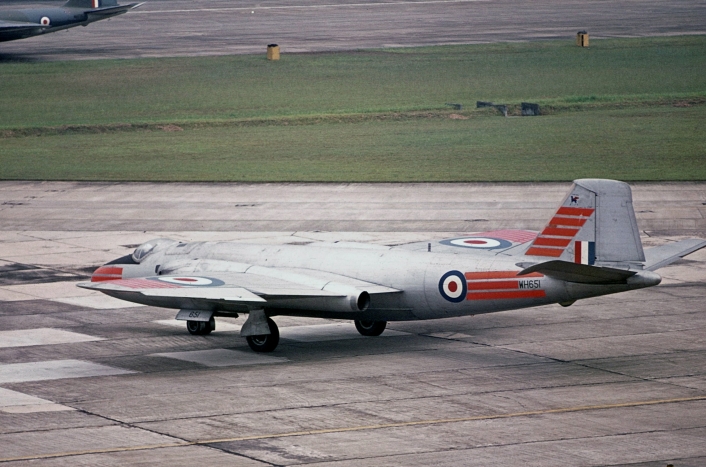
Canberra T4 WH651. Image courtesy S J Bond.
In addition to in Malayan emergency the squadron had also been involved in Confrontation with Indonesia. However, by 1970 the RAF’s presence in the Far East was being run down and on 18th February 45 Squadron was disbanded.
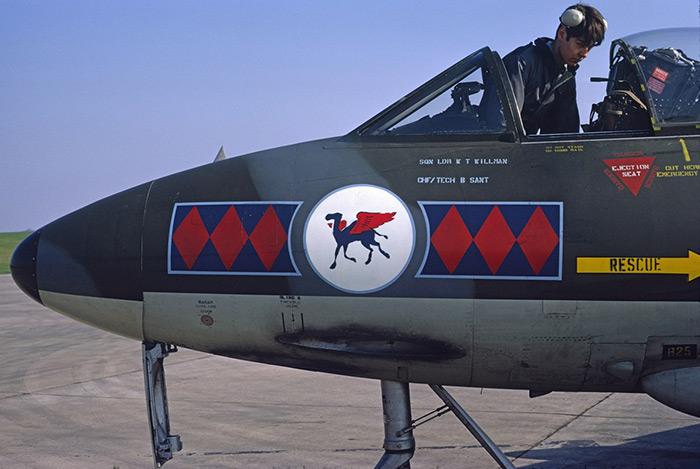
XK137-D Hunter FGA.9 RAF 45[R]Sqn.Wittering 22 MAR 73. Image courtesy of Adrian M Balch
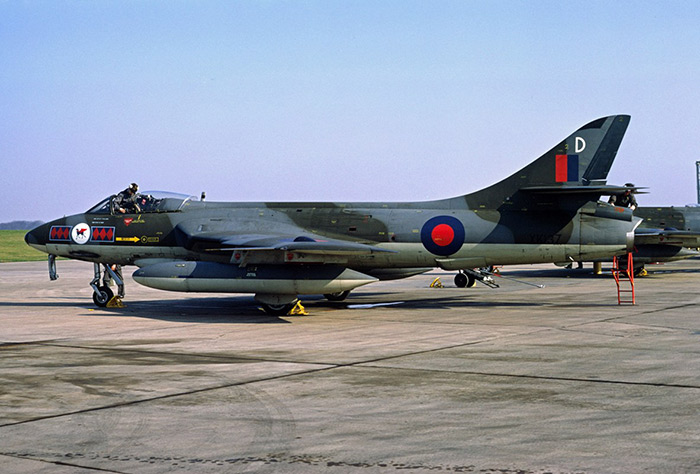
XK137-D Hunter FGA.9 RAF 45[R]Sqn.Wittering 22 MAR 73 AMB. Image courtesy of Adrian M Balch
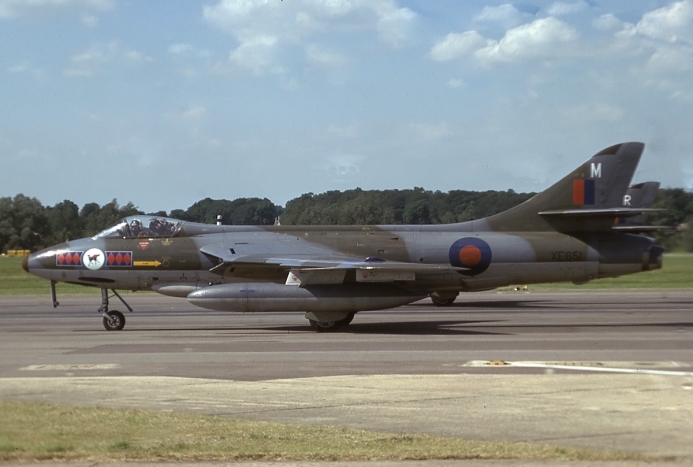
Hunter FGA9 XE651. Image courtesy of Robbie Shaw.
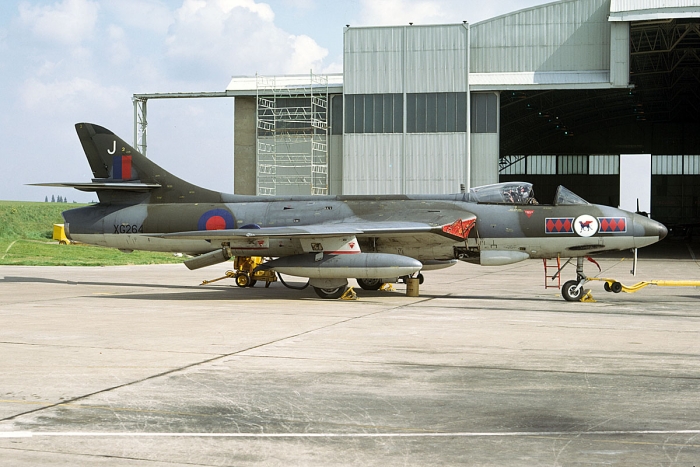
Hunter FGA9 XG264. Image via M Fenner.
After 2 ½ years in limbo the squadron was to reform and this time it would be in UK for the first time in 56 years. For over 15 years the Hunter and Canberra squadrons, particularly in RAFG, had provide opportunities for first tour pilots to gain experience before transitioning to more sophisticated types like the Lightning and the V-Force. With the replacement of these types by the Phantom, Harrier and Buccaneer it was thought that there was a need to bridge the gap between flying training and the OCUs. It was decided to form a Hunter FGA9 squadron to meet this requirement to to allocated the number plate of 45 squadron, the senior inactive squadron. The squadron was reformed on 1st August 1972 at RAF West Raynham because their intended home of RAF Wittering was undergoing runway repairs. It was assigned to the Order of Battle of No 38 Group which was then responsible for providing the expeditionary air force capability. A year later the squadron was split to create 58 Squadron. The two squadrons continued to operate until 26 July 76 when they disbanded, their role having been subsumed by the Tactical Weapons Unit (TWU) at RAF Brawdy.
Part of the tri-national Tornado programme was the establishment of a single training unit to train crews to fly the aircraft. This was the Tri-national Tornado Training Establishment (TTTE) based at RAF Cottesmore. There was, however, still a need to train aircrews on the equipment, weapons and operational procedures specific to the RAF aircraft. To meet this requirement the Tornado Weapons Conversion Unit (TWCU) was formed at RAF Honington on 1st August 1980. On 1st January 1984 45(R) Squadron became the shadow squadron for the TWCU and the aircraft were adorned with full squadron marking. During its life as a Tornado unit the squadron also took on the role of displaying the Tornado to the public, with regular appearances at air shows.
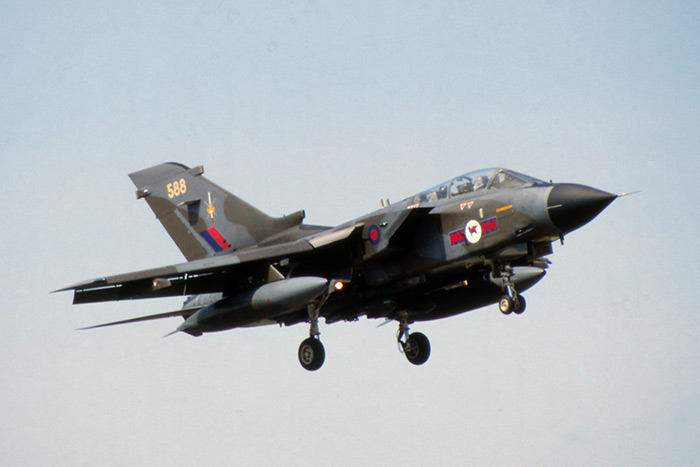
Tornado GR1 ZA588 45(R) Sqn TWCU Mildenhall 1989. Image courtesy of David Hedge
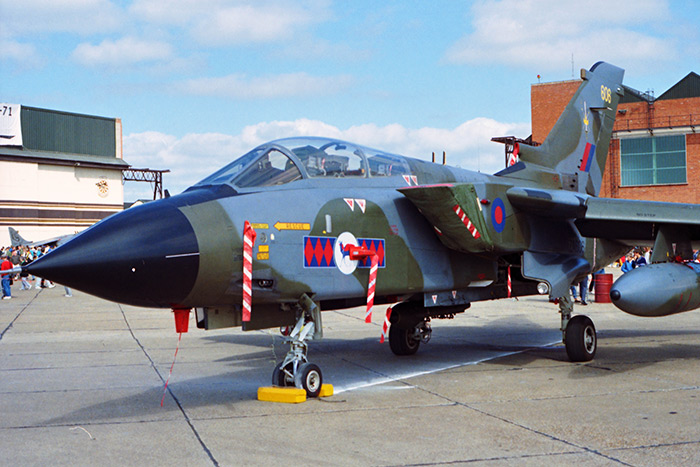
Tornado GR1 ZA606 45(R) Sqn TWCU Mildenhall 1989. Image courtesy of John Bradshaw
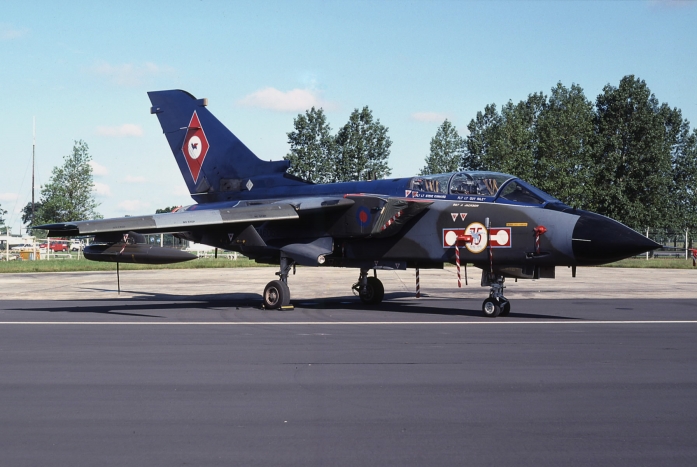
Tornado GR1 ZA606. Image courtesy of Richard O Andrews.
July 1992 marked another major milestone in the squadron’s history as the Tornado Weapons Conversion role was transferred to 15(R) Squadron. However this time the 45(R) number plate was immediately transferred to the 6 FTS Multi-Engined Training Squadron.
The new role was to complete the flying training for all RAF pilots destined for multi-engined types. The new home was RAF Finningley and the equipment was 11 Jetstream T1s. However, plans were soon afoot, under “Options For Change”, to close Finningley and in October 1995 the squadron moved to Cranwell to join 3 FTS. One result of the move was the adoption of the traditional Cranwell blue band around the fuselage.
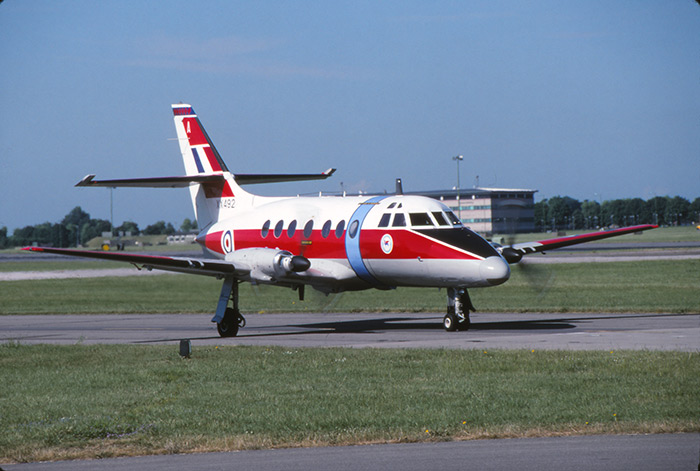
Jetstream T1 XX492 A 45(R) Sqn, 1st June 1998. Image courtesy of Peter R Foster
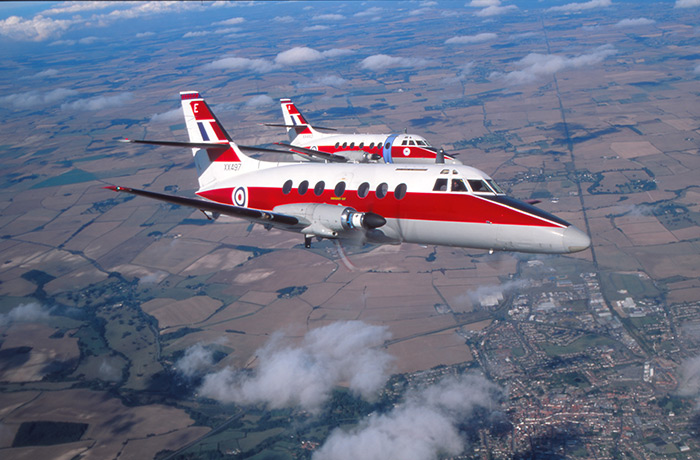
Jetstream T1 XX497 E 45(R) Sqn, 2nd October 2003. Image courtesy of Peter R Foster
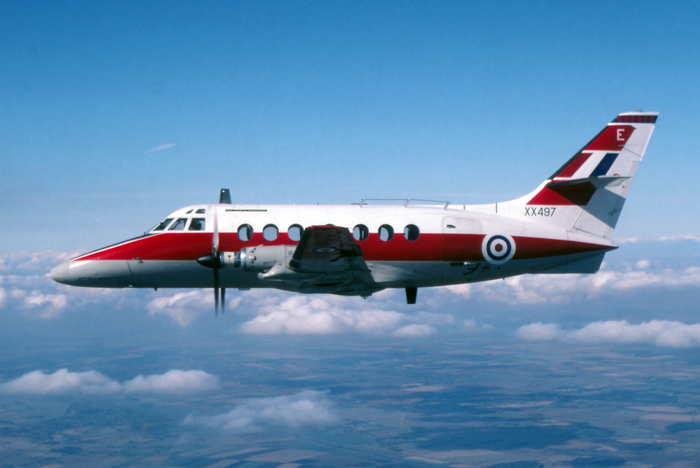
Jetstream T1 XX497 45(R) Sqn. Image courtesy the David Hedge collection.
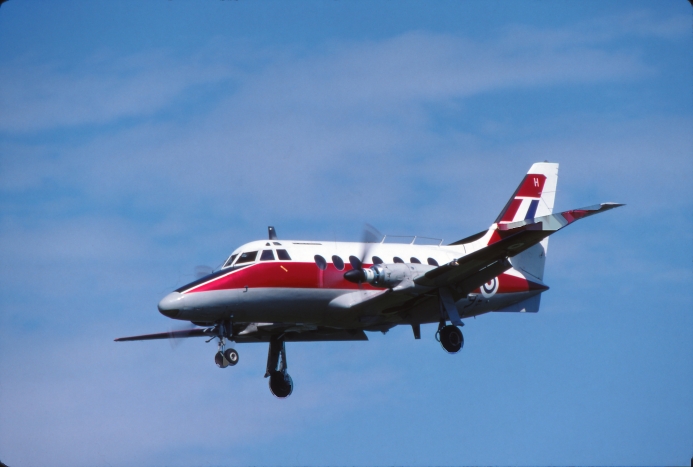
Jetstream T1 XX500. Image courtesy of Peter R Foster.
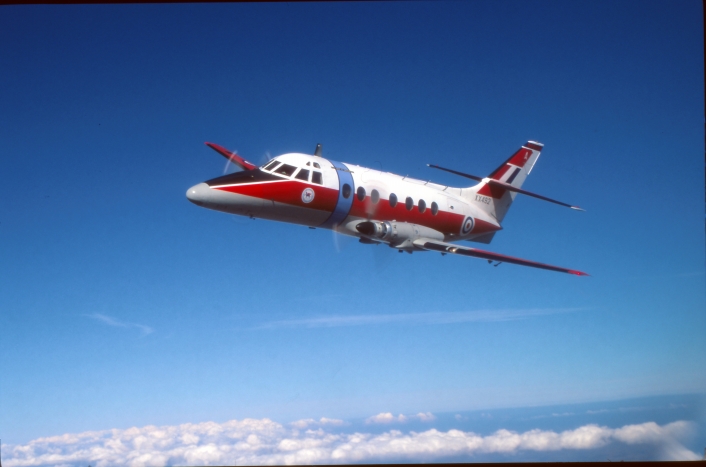
Jetstream T1_XX492 A 45(R)Sqn. Image courtesy of Peter R Foster.
The Jetstream T1 was retired on 19th March 2004 and was replaced by 7 contractor-owned military-operated Beech King Air T1s. Although the number of aircraft required under the contract has varied somewhat over the last 10 years, this remains the position today.
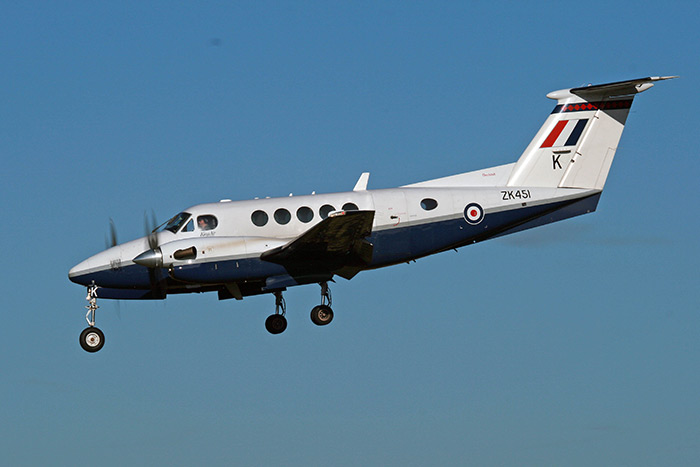
King Air T1 ZK451 K Cranwell, 18th January 2011. Image courtesy of John Bradshaw
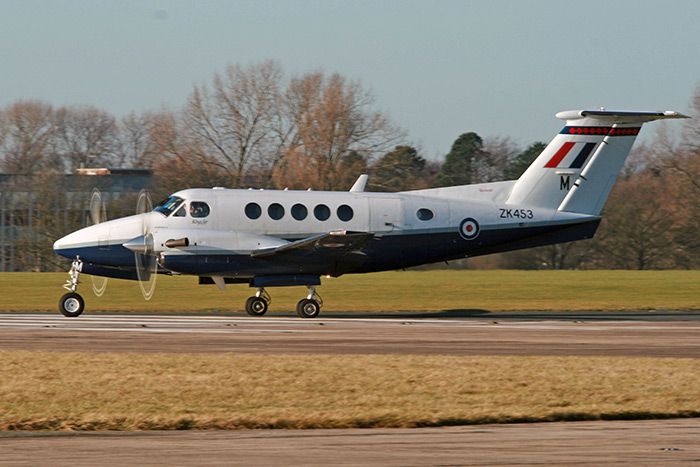
King Air T1 ZK453 M Cranwell, 18th January 2011. Image courtesy of John Bradshaw
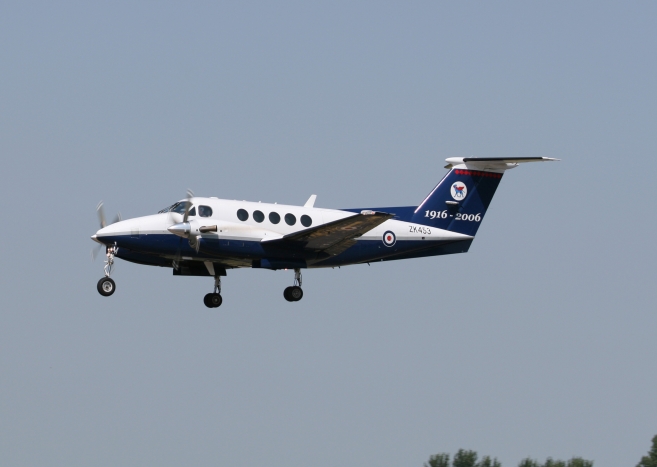
King Air 200 ZK453 45 Sqd. Image courtesy of Richard O Andrews.
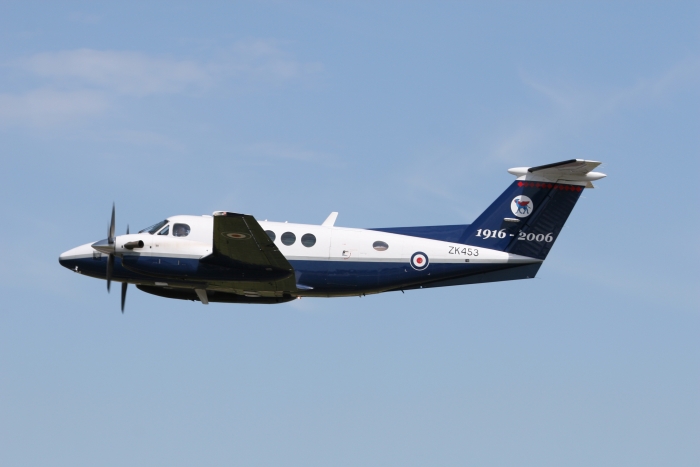
King Air 200 ZK453. Image courtesy of Richard O Andrews.
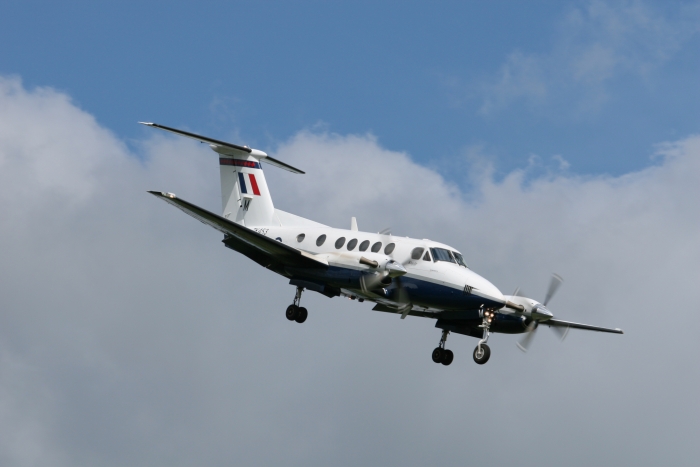
King Air 200 ZK453. Image coutesy of Richard O Andrews.
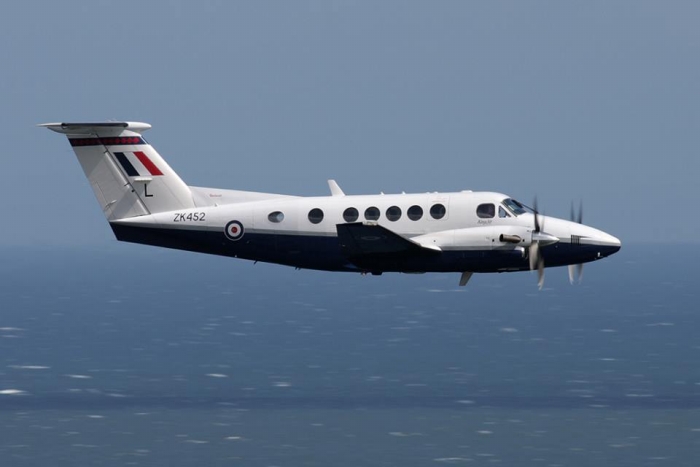
King Air ZK452. Image courtesy of Karl Drage.
During the preparation of this page extensive reference has been made to The Flying Camels by Wg Cdr CG Jefford.




